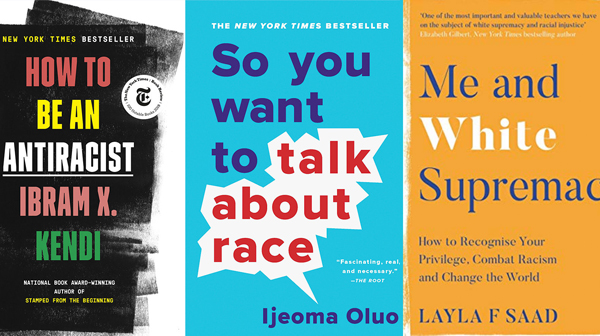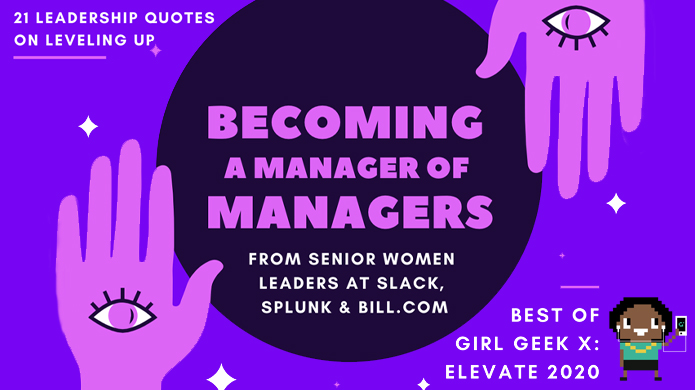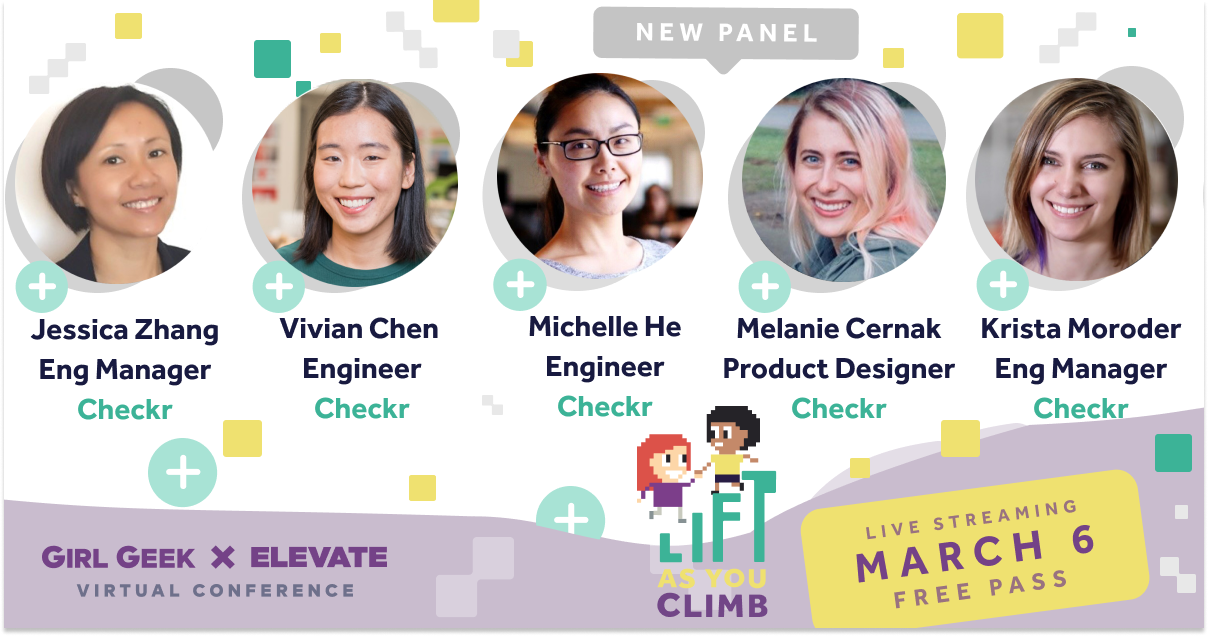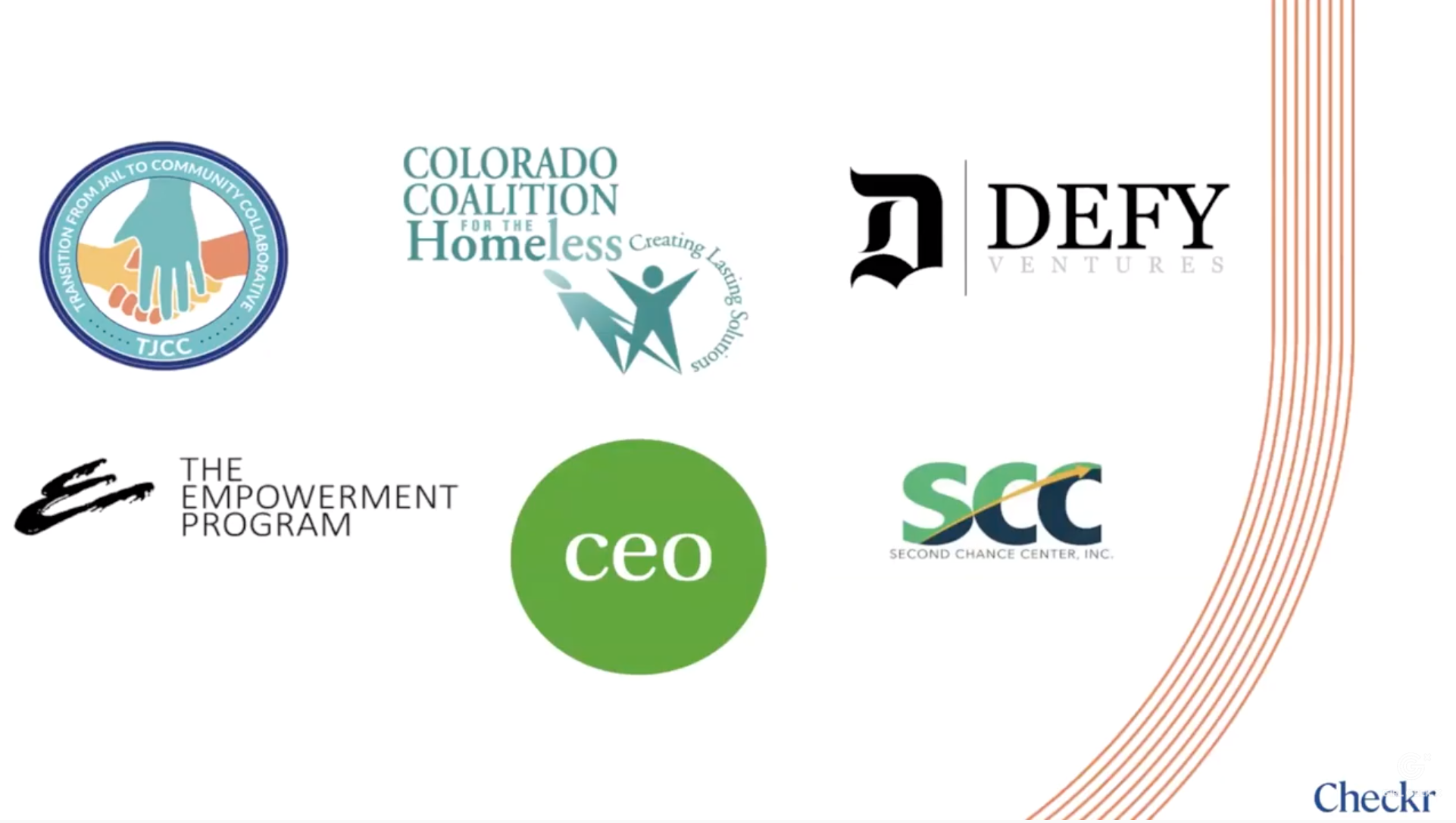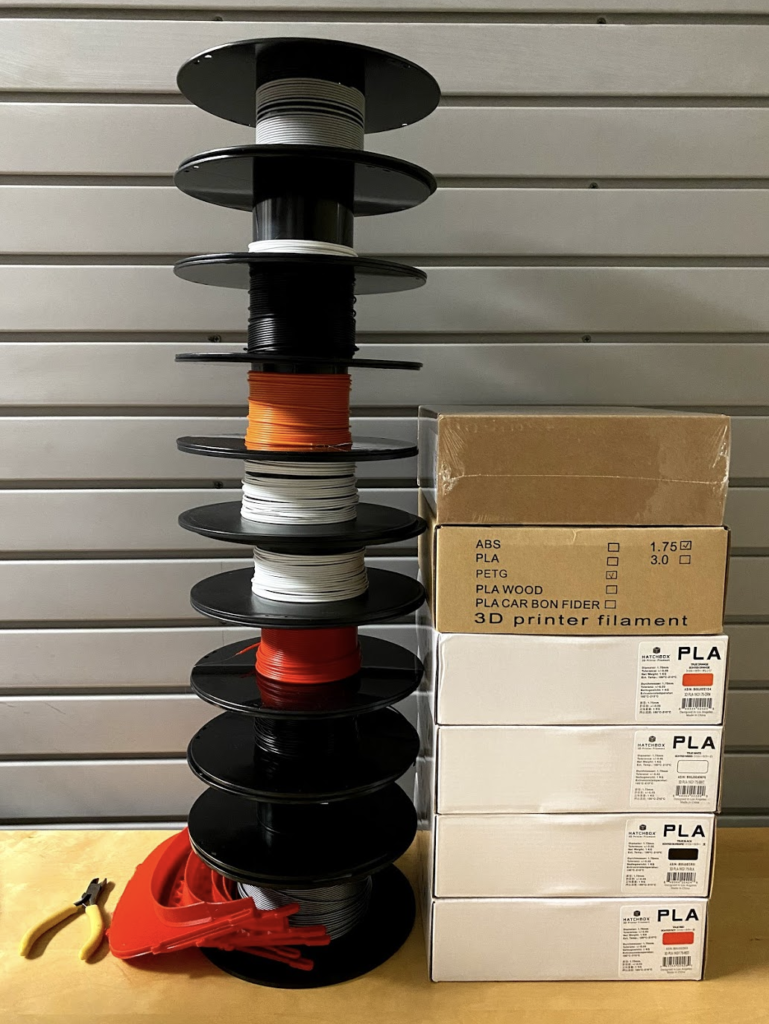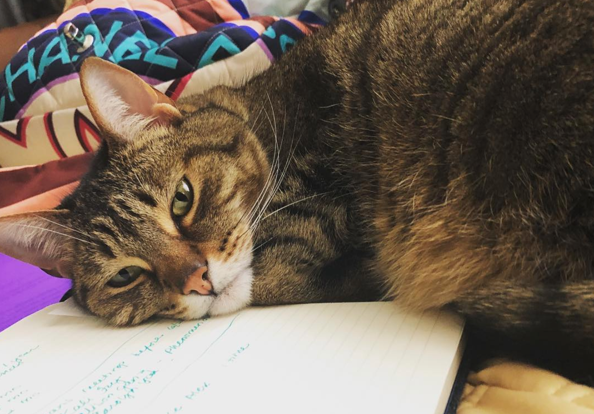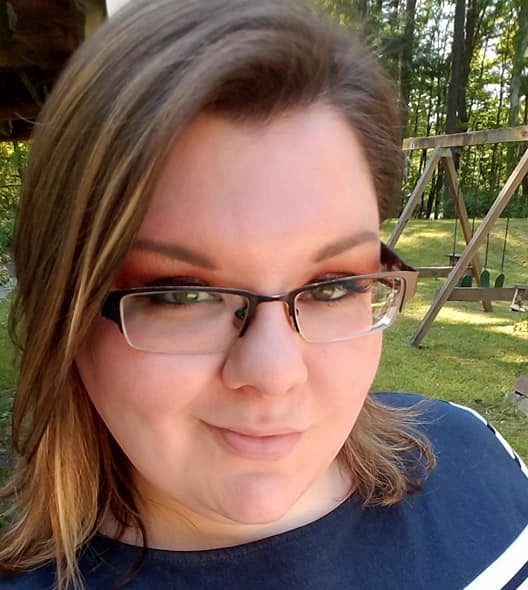Transcript of Elevate 2020 Session
Gretchen DeKnikker: The inspiration for this panel was, you think it’s really, really hard becoming a manager until you become a manager of managers, and you don’t realize it’s just like another rung on the ladder. It’s like a whole different skill set and you’re lost, and it’s super hard, and so because we have such an amazing senior audience tuned in today, I thought this would be a perfect topic. And then, thanks to these wonderful ladies, we were able to put together the perfect panel, also.
Gretchen DeKnikker: So we have Ines Thornburg, who’s the Area Vice President of Splunk, works in their customer success arm. Arquay Harris is the Senior Director of Engineering at Slack. She actually got her intro at Slack through a Girl Geek dinner, so you should be coming to those dinners, because if you want to be Arquay, and don’t we all, you should do that. And then Bora Chung, who’s the Senior Vice President of Product Management at Bill.com. So, they’ve all worked at different sized companies. They’re at different sized companies now, so they have all of this amazing perspective. Bora’s going to come from product and Arquay’s going to come from engineering and Ines is going to come from customer success, and it’s going to be amazing, and all I have to do is basically sit back and let these women talk.
Gretchen DeKnikker: So, if we want to do a quick kind of round of intros, and why don’t you start, Arquay? And let us know kind of how many people that you’re managing now and a little bit about how you got where you are.
Arquay Harris: Sure. Hi, I’m Arquay, a senior director of engineering of essentially the growth team here at Slack. My org is about 70 or so people. I manage two teams. One is called customer acquisition and one is called expansion, and essentially they make up the product purchase funnel. How I got to Slack, as mentioned, I went to a Girl Geek dinner. I highly recommend that you go. It’s very rewarding. I’ve been here for about four years. I’ve watched the company grow from a company that was about 500, where engineering was roughly 100 or so, to now engineering is well over 700 and at our largest we were 2,500 people.
Gretchen DeKnikker: Bora?
Bora Chung: Hi everyone, I’m Bora Chung. I am SVP of Bill.com and I lead an organization of about 40 product managers and product designers. Just to give you context of the size of the company, we are about 13 year old company that do workflow automation for SMBs and our revenue’s about, I think last fiscal year was about 110 million. The entire company size is about 550, so product managers and product designers account for about 40 of them. We just went public December of last year so we’re going through a transition of being a private company to public company.
Bora Chung: How I got here, even though I manage both designers and product managers, my own professional heritage is more on the product management side, so I spent nine years out of business school at PayPal, four years at Apple, and then four years at eBay.
Gretchen DeKnikker: The quick unmute is not working. Ines, can you go?
Ines Thornburg: Absolutely. Thank you, Gretchen. So, Ines Thornburg. I am responsible for the Americas portfolio and customers for customer success at Splunk. My team is about 100 people, comprising of customer success managers as well as the renewal function and the renewal team that supports Americas customers. Been here about two years now and my career spans back to a series of different software companies where I started off as a consultant doing implementations, moved into presales, joined Oracle through the acquisition of Hyperion, so I went from a small growing company to a midsize company to a mega company. Was there for a while, learned a lot and then decided to try a venture startup.
Ines Thornburg: So, why I’m at Splunk, the technology’s very relevant in today’s data explosion as well as where we are in our journey in terms of maturity. And so Splunk is going through a pretty massive business transformation, shifting to a SaaS and subscription model, so that’s what really excited me. We’re still what I would consider a medium size company and really on a trajectory of growth, and that’s what I feel like I can make an impact on for our customers.
Gretchen DeKnikker: All right. So, you guys can see … Y’all, I’m trying not to say “you guys”. Y’all can see why I’m so excited about this panel. They have just an amazing set of backgrounds. It’s a completely different skillset, right? Ines, what do you feel like you kind of had to relearn in that very first time that you went from being a manager to managing managers?
Ines Thornburg: Gretchen, for me it was all about how I spent my time, really. And so going from being, as I mentioned, starting off as an individual contributor, doing the work myself, then being able to manage people doing work, then to manage multiple workstreams and priorities and making sure that those managers responsible for different workstreams not only were competent and experts in their field, but then, me balancing my time across the different responsibilities in a way that, frankly, I wasn’t getting too involved, I learned to trust the expertise on my team and learn what was good enough. And frankly, perfection is not always the end goal. We have to continue to progress multiple workstreams at one time in initiatives, and really making sure that no one gets left behind.
Ines Thornburg: And so, me figuring out that right balance between rolling up my sleeves and doing versus allowing people to do and coaching along the way was really that arc that we continue to perfect over time.
Gretchen DeKnikker: Bora, you were within the first 100 employees at PayPal, right?
Bora Chung: That’s right. When I first started, I started out as an MBA summer intern and the company was about 100 people.
Gretchen DeKnikker: What was that journey, along the same vein that I’m assuming it sort of started there where you were drinking from the fire hose?
Bora Chung: Sure, sure. I think the soft skill that I learned during that period was just mental agility. So, there were a lot of ambiguous situations when you’re a fast paced startup with just very few resources. You don’t really have a very well defined job description, so there were lots of ambiguous situations that hit you every day but just figuring out how to be a go-getter and get out of that ambiguity using mental agility was a skillset that I picked up in the early days of my career, and then if I could just connect that with the manager’s manager tradition, when I get to manager and then a manager’s manager, what I had to unlearn a little bit was when do I helicopter out versus when do I helicopter in. There’s absolutely no management course or management book written about how to do it, when to feel it out.
Bora Chung: So I think that’s a basic soft skill that you have to pick up very quickly and I struggled through that a little bit. I’m still learning it, but to me, the biggest difference between a junior employee in a very small startup versus a manager’s manager is learning how to do helicoptering in and helicoptering out at the right moments.
Gretchen DeKnikker: Right. Yeah, I like that analogy. Arquay, what’s a skill that served you really well as a manager and then you kind of had to unlearn?
Arquay Harris: Oh, that I had to unlearn? As an engineer, I got into engineering leadership in the way that most engineering managers get into engineering management which is you’re the most technically proficient person on the team and so your manager says to you, “Have you ever thought about management?” And you’re like, “No, but I’ll try it,” right? And so it’s a really hard transition because … It’s really hard because you know that you’re technically most proficient and so you just want to jump in there and do PR reviews and all of the stuff, and so you have to really make this transition from being able to be the person who was the peer on the team to the person who is the leader on the team.
Arquay Harris: And then when you make the transition from managing individual contributors for people playing bingo to manager, what happens there is you go from this very directive sort of supporting, coaching state of mind to managing to outcomes. So, when you have a person who is also responsible for managing other people on the team, you don’t want a person who is managing or doing things in the way that you would do them. Right? You want them to manage in the way that they do them and the way that feels comfortable for them.
Arquay Harris: And so I would never say to my manager, “Hey, I want you to do this and this is step one, two, three.” It’s like, “This is the outcome. How can I support you to get there?” You have to really trust them to be able to do it. And so the unlearning comes from this thing of wanting to be the person who is the hero, jumps in, saves the day, maybe writes the code, to really growing and empowering that next generation or that next level of leadership.
Gretchen DeKnikker: Yeah, absolutely. Maybe let’s go to Bora. What skills have you gained along the way that you feel like, “If I’d just learned that earlier, it would have been so much less painful?”
Bora Chung: Right, right. I think it’s doing skip level one-on-ones and getting the right communication done in those sessions. So, one mistake I made when I become a manager’s manager was I was just having one-on-ones with my immediate direct reports, but then they also have a set of teams and maybe not as frequent, but making sure that I check in with the team members and the delightful moments are when I hear some of the key themes and strategies being played back, I think that’s when things are going well. When you completely hear game of telephone being played and have a disconnected kind of direction and alignment, that’s when you know that things are not going well, so I think one thing that I recommend, and is a pretty tactical thing that you could easily do is maybe a little bit less frequent but do a skill level one-on-one check in and I think that I didn’t realize early enough but I picked it up and that has been serving me greatly.
Gretchen DeKnikker: Yeah, I’m taking that one back with me for sure. How about you, Ines?
Ines Thornburg: I think the one thing as you grow in your career and you become more visible, have more responsibilities, the one thing that I’ve learned is that when you speak or when you say something, the impact of what you’re saying really is that much stronger, that much more gospel, so to speak, and when you’re facilitating a meeting or when you’re communicating, you have to realize that, again, as your responsibility grows, is that people really listen. So you have to be careful, so if you’re trying to facilitate a brainstorming, for example, what I’ve learned is, facilitate the dialogue, get the conversation going, but I reserve what my opinion is until the end, because I don’t want everybody to just think that my opinion is the right one, because it’s certainly not. That’s why I bring together, and when I’m doing hiring, I always try to look for complementary skills.
Ines Thornburg: So I’ve learned to really be cautious about what I say and when I say it and to whom I say it, because I realize that, frankly, what I’m saying does affect and impact a lot of the folks on the team.
Gretchen DeKnikker: How about you, Arquay?
Arquay Harris: Things I wish I could have learned earlier?
Gretchen DeKnikker: Mm-hmm (affirmative).
Arquay Harris: This is a thing that I say all the time, which is … I say, “Be friendly, not friends.” If my team’s watching, they’re probably laughing about this because I say this a lot and it’s basically very early on in my career when I made that transition to manager, these people are your best friends. You hang out with them every night and when you are friends with the people who report to you, you cannot be impartial, right? You can’t say to your best friend, “You really screwed up on that thing. I need you to work harder in this area.” It can be really awkward.
Arquay Harris: And so what I really learned later in my career was how to set boundaries, because I do you a disservice if I’m not able to give you that really constructive and helpful feedback and help you grow. And that doesn’t mean that you have to be this monster who’s just a robot, but boundaries are really, really important and I just wish I’d learned that earlier.
Gretchen DeKnikker: Yeah, definitely. Definitely. You’d kind of talked a little bit before about another skill, about learning to delegate, and you had this example of quadrants.
Arquay Harris: Yeah. I kind of dug into that a little bit earlier. I wish I could claim credit but it’s essentially situational leadership. You can google it. There’s lots of videos on YouTube about it, but it’s basically about how when you are leading a large organization, or any organization, what a lot of managers will do is they will try to bend the team to the way that they lead. “I’m really introverted” or, “I’m super extroverted” or whatever it is, like the people need to fit into what I expect of them, but really, what a really good leader should do is you should make your management style situational to the person and to the stage that they are in their career.
Arquay Harris: And so it really just goes into this first quadrant, which is directive, which you might do to a more junior person. You might say, “Bora, I need you to log into this machine, do this work,” and then you move up into coaching, which is you have a little bit more skill and it’s like, “All right, you kind of know what you’re doing. How can I coach you through it?” Onto supporting, which is, “You know what you’re doing. How can I support you? How can I help you get to that next level?” And then the final magic kind of golden quadrant is delegation, and that’s just, “I don’t even really need to tell you what to do. You probably are bringing me the problem, telling me what it is that needs to be solved.”
Arquay Harris: And I think the thing that’s really interesting is it’s not really a straight line. You might kind of hover, depending upon your skillset, maybe in communication you’re in full on delegation mode but at technical proficiency maybe you need a little bit more support, and so I think that when I’m managing managers, I really try to think about it in that way, about what are the strengths and how do I help really, really uplift a person’s strengths and how do I help them really either correct for or counterbalance any weaknesses that they may have?
Gretchen DeKnikker: That is a good segue. Hiring is so different. All the skills that you learn to vet people when you’re a manager, and you’re just vetting them for do they have the skillset to do this role and do I think they’ll be the right fit with this team? But when you start hiring managers, what’s your suggestion there? Where do we start, Ines?
Ines Thornburg: One of the best practices that we have, and we really are very firm about it at Splunk, is at any role at this point, we have a panel. We have a select group of people that bring different questions to the table to assess skill. So, for example, we may have someone assessing the technical skill, we may have someone assessing behavioral type skills, situational skills, collaboration skills, et cetera. I always like to make sure I speak to the finalists.
Ines Thornburg: I like to know every single person on my team, a little bit about them, and really I have two primary questions that I’ve always asked as a leader doing hiring through every company I’ve been at, which are, number one, why am I talking to you today about this role, whatever the role is? Because what I’m looking for in that question is really what is their career journey? Why does this particular role fit into their long term career journey? I’m not looking for someone that’s just applying for a job because they may have seen something. I want somebody who’s put thought into how this role is going to help them along their long term career journey.
Ines Thornburg: Second, why Splunk or why whatever company? And to me, that shows me they’ve done their homework, they have a passion about what the company is we’re trying to achieve and we can have a dialogue. And from there, those two questions really help me take it on to the next level conversation, which is something that, frankly, how I always start those … And I’m not looking for skill, I’m not looking for technical proficiency. I’m looking for the long term drivers that really want that person to be on my team.
Gretchen DeKnikker: So, Bora, you’re at a company that’s one sixth the size of Splunk, so you might not quite have all the bells and whistles that Ines has at her disposal, so what is your process and how is it different?
Bora Chung: We start with the fact that interview is definitely a two-way street. We want to make sure that we evaluate the candidates, but candidate’s evaluating us, so we try to actually put an interview panel together that represents cross functional relationships, because teamwork, team play is an important element of culture at Bill.com, so we make sure that the candidate experiences the characters and the types of people that he or she will be working with. So, I think that’s one.
Bora Chung: The other piece is I think we have different seniority levels represented in the interview panel as well, so that I think some of the maybe early career folks could really test out the technical chops. You know, is this person a great designer? Is this person a great engineer? And then maybe someone like me could maybe test a little bit more about their soft skills, right? Can you actually influence the cross functional teams? Are you going to think more for the company versus your own output versus your own team’s output?
Bora Chung: So, I think we have a good balance of technical assessments and culture fit and teamwork elements going on. So I think we could definitely do more in terms of strengthening the recruiting process, but we’ve been hiring a lot of good talents through this.
Gretchen DeKnikker: Arquay, you’re kind of at the midsize between the two, but also, what did you have to change about how you interviewed? What skills did you need? What muscle did you need to build to be able to vet people to be managers as well as you did for ICs?
Arquay Harris: Having worked at very, very large companies where you have an interview process that is pretty set in stone and pretty precise, the cool thing about working at a hyper growth company like Slack is that I had the opportunity to really be involved in crafting that interview process and seeing it evolve over time, and we, right now, have a pretty defined rubric where we have pretty set slots where you’re judging people on things like teamwork and collaboration, ability to execute, strategy, and then we try to make it so that we have really diverse panels that are representative of gender and race and tenure and that type of thing.
Arquay Harris: But I think that the difference between evaluating an IC versus a manager is that to a certain extent when you’re judging an IC, there is the work product. That can be a really good weeding out factor, because if you do a coding exercise or you do … even when you come in and you’re doing white boarding exercises, not necessarily algorithms but something that shows technical proficiency, it’s a little bit easier to see whether or not a person can thrive or not thrive. It’s not perfect, but you have more signal, right?
Arquay Harris: When you’re evaluating a manager, it is, as I was mentioning, a lot more about the soft skills, and so you’re really trying to see if given certain scenarios, how they can fit and I think that it really does depend on your particular company and size and what you’re looking for, and so, for example, in those early days of Slack, one of the things that was really important was hiring managers who had experience or aptitude for scaling teams.
Arquay Harris: Because recruiting, if your engineering org is like 50 people or 100 people and we’re trying to grow to 7, 800 within a couple years, recruiting is going to be a very big part of it and do you understand to build strong relationships with recruiting? Do you understand how to really evaluate your pipeline? Fill gaps on your team? And so it’s these types of questions that we’re really looking for.
Arquay Harris: In terms of making it so that it’s a really fair and consistent process, we really make sure that we try to have our interviewers stick to the rubric, look to the way that people are answering the questions and that it’s not just subjective, like, “Oh, they’d be cool to hang out with,” kind of thing. We like to make it so that there’s some fairness and consistency built into the process.
Gretchen DeKnikker: Yeah, absolutely. You got me thinking, also, I think some folks really hesitate to hire that person with way more experience, right? Especially if you’re at the hyper growth company, because if you’re in a senior role at the hyper growth company, you’re gaining the skills at a rate that does not keep up. You might have perfected your job yesterday and you might be finally good at it, but the next day, it’s a different job and you’re not good anymore, and you’re constantly going. So how do you sort of fight that … I think some people get really nervous about, “I need to hire someone who knows what it looks like when we get there,” but that’s also a person that may know a lot more than you do, and I think people hesitate with that. How do you advise people to work with that?
Arquay Harris: Yeah, when I started at the company, my team was two people. Literally two people. And that was fine. I was like, “All right, let’s roll up the sleeves, let’s get it done,” but I was really excited about working for this particular company at that time and I think … You can suss a little bit of that out in the interview. If you’re interviewing someone and they haven’t done that exact thing and they can really describe to your their approach or their philosophy, what I really look for is, is this person a structured thinker? Do they have best practices or some kind of toolkit or some sort of methodology in the way that they approach leadership?
Arquay Harris: Because part of it is what you just said. It’s all intangible. The ambiguity is so high at a company like this, that I think understanding what type of leader you are and what you can contribute, that’s way more important than a very specific checklist of skills, because like you said, tomorrow it’s going to be different anyway.
Gretchen DeKnikker: Bora, you were nodding your head on that.
Bora Chung: Yeah, I was thinking about the early part of my career when you asked that question. I think when I was more junior in the early part of my career, I was thinking that I should be the smartest person if I’m the manager, and I was somewhat reluctant and afraid of hiring people smarter than you … smarter than myself, rather, but what I am realizing is that it’s absolutely cool to hire people smarter than me. It actually elevates the team. It improves the quality of the thinking and ultimately what we deliver to our customers is going to be much stronger. So I think I had to shed that a little bit of early stage career insecurity to really put together a strong team, so I think that was one.
Bora Chung: And then I think it goes back to one of the comments that Ines made earlier. I don’t have to be the perfectionist that knows all the answers. Sometimes a great value as a manager or manager’s manager comes from asking the right question, maybe asking the powerful question that nobody else is asking, because they are afraid or there’s a big elephant in the room. So I think a lot of wisdom I gained over the years is that it’s awesome to have team members that are smarter than you. They elevate you and your team and then, two, is you don’t have to have all the answers. Sometimes asking the powerful question could really be helpful as a manager or manager’s manager.
Gretchen DeKnikker: Absolutely. So, Ines, you have this huge organization. What do you have to add in? You have 400 people, right? Or something. It’s a crazy number.
Ines Thornburg: At Splunk, my team’s about 100 but in other jobs and other companies, it’s certainly been a lot larger, and that’s the thing. As our responsibility grows, you’ll have lots of different experts on your team in different disciplines, different business units, what have you, and it’s impossible just to chime in with Bora and Arquay. You can’t be the expert. It’s just physically impossible as your organization grows, and so what you do need to do is to be really, really comfortable working with these teams of experts in helping them accomplish their mission. And so, as a leader, really, my value to my team is making sure that we’re working towards the same goals and cascading those company goals down. Everybody understands those goals, that we’re progressing on those goals and frankly that we’re communicating our progress effectively in working together.
Ines Thornburg: Splunk’s a very technical company, like all these others, and am I technical? No, but I have a business degree and frankly we’re running a business at Splunk, and so my goal is to make sure that from a customer perspective, that those customers are getting value out of our technology so that they renew and we grow as an organization. And so, my value to my team is different than the value of them to our company and that’s what we have to make sure that we’re always balanced on so that together the team is stronger. So, that’s the way I think about it.
Gretchen DeKnikker: Okay. Time is going way too fast. We’re going to do one more question and then I see that we have some amazing, amazing questions in the Q and A also. So, your most cringe-worthy and your most exciting moments when you first made this transition, so that everyone can sort of go along with you. I can go first. My most cringe-worthy was like what Bora said. I thought I needed to know everything and I was so embarrassed when I didn’t know what was going on, and it took me a while to realize I’m just air traffic controller and actually the less information I have on a tactical level, the less opportunity I have to screw things up and I should just let the expert be the expert.
Gretchen DeKnikker: And then my most amazing one was when I walked in, I was planning this 10,000 person conference and there were hundreds of people setting up all of these little tiny details that we’d spent a year making and I knew the names of like six people that I could see at any given moment and I was like, “Okay, this is working. They have this. They’ve got it. I don’t even need to know what’s going on right now. This is amazing.” So, why don’t you kick us off, Arquay?
Arquay Harris: Cringe-worthy is definitely bad hires. Unlike hiring a bad IC hire, the blast radius is just so large when you have a bad management hire and it could affect the careers for quarters and quarters of the people in the team. Most amazing moment is really fulfilling and rewarding to see people grow, to see them go from kind of more junior manager to senior manager to director, to see them be able to come into their own as a manager, develop their own styles, and yeah, that’s probably the best thing.
Gretchen DeKnikker: How about you, Ines?
Ines Thornburg: Most cringe-worthy is when I feel like I’ve not done enough preparations and prepared my team, and so specifically, again, we’re all in some sort of technical discipline. Learning the technical skills, I think, is one aspect of the job, but let’s not forget about the soft skills. And so Arquay mentioned soft skills and looking at those in hiring, but also continuing to help the teams augment them. So that means communication skills, that means collaboration, meeting facilitation. It means executive presence, making sure that when you’re representing your company or your team, that you do it in such a way that you’re proud of that. So, when I know I haven’t prepared my team and I see a train wreck about to happen, that’s when I’m like … That’s the cringe-worthy.
Ines Thornburg: The most proud, frankly, Splunk just had our sales kickoff and we’ve been working really hard as a customer success organization over the past couple years to get to a point where we’re really ready to support almost 20,000 customers globally and the team recognition and what I saw … what my executives and the company recognized on the customer success team was just extremely rewarding to see the people on my team winning awards, being part of large contributions to customers, and frankly it just made me really warm and proud inside.
Gretchen DeKnikker: That’s awesome. All right, Bora.
Bora Chung: So, cringing moments. When you become a manager’s manager, naturally a lot more escalations hit your desk and escalations could stem from conflicts between people or conflicts between departments or sometimes goals are not aligned. Just having to resolve conflicts on behalf of the team, sometimes you’re successful, sometimes you are not so successful and disappoint the teams. So I think the escalation handling and conflict resolution, I think I had some rough spots at the beginning of my career, so I think that’s the cringe moments. The most proud moments, there are times that when you go on an extended vacation or extended business trip, you come back and your boss is basically telling you that, “Oh my God, Bora, your team was perfect. I didn’t even know that you were out of the office.” And at the beginning, again, you’re like, “Does that mean that I’m not adding any value? Did you not know that I was out of office?”
Bora Chung: Sometimes I would wish that some crisis would happen just so that they know that I was absent, but I think the real truth is that that means that you have a fantastic bench and you have a great top talent manager. So, my most proud moment is when I’m absent on a sabbatical or vacation and then the team doesn’t even notice that. I think that’s the ultimate success of coaching and grooming the right team.
Gretchen DeKnikker: Absolutely, yeah. Okay, so we have a ton of questions. The first one, and we’re going in order of their voting, as women of color, have you experienced any difficulty or veiled biases while managing male coworkers? What did you do to handle that situation? So, Arquay, Bora?
Arquay Harris: Sure, I’ll just jump in. I think one of the hardest things about being a woman, especially a woman of color, is just the big issue of low expectation. What happens to me a lot in particular is people think that I’m not technical. I’ve had interns be like, “Do you code?” Which is a ridiculous question that you probably never ask a male who’s a director of engineering. And so I think, yeah, you face that a lot and it’s really unfortunate. On the bright side, I think things are changing, particularly as we get more and more women in leadership positions, I think just having different voices in the room is really contributing to the conversation.
Bora Chung: For me, the usual stereotype where sometimes the hardship is, especially as an Asian woman, getting stereotyped into a bucket of, “Oh, you must be quiet, you must be an introvert,” so I think this is why I spent extra energy on developing what we usually call the executive presence and executive gravitas, because especially when you become a manager of manager, it’s not just your personal brand and personal reputation. It’s your team’s effectiveness that you have to be responsible for. So, I think those have been some tough spots, but I think I try to overcome it by being more vocal and representing the team more actively.
Ines Thornburg: Gretchen, I think you’re muted.
Gretchen DeKnikker: I need to unmute. Okay. Bora, this one’s for you. What are the things that you discuss during your skip level one-on-one? I’m thinking of setting up a skip level one-on-one with my skip level manager but I don’t know what we should discuss during those meetings.
Bora Chung: Right, right. So, I think it starts with just a very broad question of how are things going? And the other kind of check in is that, is there a certain expectation? So I try to also let the manager in the middle know that we are having the skip level. So I think the worst outcome is that if the manager in the middle gets alienated in this conversation, so I don’t really have an agenda. I think just like our services are getting more and more personalized, I think the skip level one-on-ones need to get personalized. So with some folks, I talk about just their career aspirations. With some folks, since I’m one level away, they could maybe ask more questions about the big picture strategy and whatnot, so it’s a little bit different, but the two things that I just always do is I let the team member drive the agenda. I just start by just checking in on overall things and I make sure that the manager in the middle is aware of the fact that we are having this conversation, and we’re not breaching confidentiality.
Bora Chung: There are some key things that I think the manager in the middle should know. I also make it pretty obvious and public as well.
Gretchen DeKnikker: Ines, do you do skip level?
Ines Thornburg: Oh, absolutely. Yeah, I even do double skips. Like I said, I want to be the finalist on all interviews because I really take pride in knowing people. One of the things, as a leader of a large organization, that I like to understand is, is career aspirations, as Bora mentioned, because honestly this is where we have a much larger purview of opportunity as a leader, and frankly if I have a conversation with someone and I understand really they want to be in another part of the organization at some point in the future, if I see that connection and see that match, I would love to make that match and keep that talent within my company rather than seeing people leave and take all that wonderful knowledge that we have, and great talent, to another company, frankly.
Ines Thornburg: So, I do that a lot and, frankly, when I’m looking … I don’t want people leaving my organization necessarily but at the same time, if we can promote from within and give people more opportunity within our organization, it just makes … frankly, people appreciate that and I love a team that culturally has a strong morale and knows that we’ve got each other’s backs.
Gretchen DeKnikker: I think this one’s for everyone, so we’ll have Arquay kick us off. What are the top traits and qualities you recommend focusing on for someone looking to get into a management role?
Arquay Harris: Adaptability for sure, because the thing about being an IC is that it’s a pretty defined trajectory to go from associate to engineer to senior to staff to senior staff, right? You might not know exactly what it is but there are some … some part of it’s mapped out. It’s a little bit more opaque when you’re talking about leadership because in any given moment you could have to deal with people’s emotions and you have to coach and you have to support and you have to discipline and you have to … It’s just all of these things that you have to do, and so you have to take, like we say, growth mindset. You have to be willing to iterate and change. So if you have these kind of qualities …
Arquay Harris: If you’re a person who’s really rigid and like things just so, you maybe want to not consider … Consider something else.
Gretchen DeKnikker: Or find people that are just like you.
Arquay Harris: Or that.
Gretchen DeKnikker: Yeah. How about you, Bora?
Bora Chung: I would say maybe two shifts and mixes, right? One is if ICs generally think about execution for the most part, I would say you have to start to blend in execution as well as strategic thinking, right? So I think that’s maybe the first shift. The second one is just how you think about time horizons, so let me maybe take product development as an example. Maybe when you’re an IC, you’re thinking mostly about next release, the release after that, but when you eventually become a manager, you think about maybe an annual roadmap or like a three year vision. I think those are maybe the difference in time horizon of your thinking, and there’s not a right or wrong. I think there need to be different parts of thinkers. Some people need to execute, some people need to think strategy, some people need to think next release, some people need to think about the three year vision, but I think those are some of the shifts that you start to … you need to have to transition into a managerial role.
Gretchen DeKnikker: Ines?
Ines Thornburg: Yeah, in addition … I mean, the adaptability is huge, and Bora’s comments, I think, were spot on. I will add onto those, communication, and, frankly, as you think about just rallying a team from what they’re doing at a macro level down to the micro, everyone needs to have a proper communication cadence and understand where we’re all marching toward. So, I think a lot about communication and different ways that we communicate, whether it’s quarterly all-hands calls, weekly cadence calls, the one-on-ones, the skip levels, Slack, we have Slack channels, we have email … I mean, we communicate in lots of different ways.
Ines Thornburg: We actually have spent the starting part of our year thinking about all the different communication … You know, the different communication means and important forums that we need to do to make sure, frankly, everyone is marching in line. At these high growth companies, things are moving so fast and, frankly, as a leader, we have to make sure that everyone is working towards the same goal. So, tops down, bottoms up, communication to me is super, super important and sometimes we just don’t think about it enough. So that’s one that I’ll add on.
Gretchen DeKnikker: Yeah, or the mindset that meetings are a waste of time. Meetings are your lifeblood when you get to a certain level. If you spent your whole day in meetings, unless they were just … you’re not careful with your time, if you spent your whole day in meetings, you were doing your job all day, and I think that’s a mindset thing that a lot of people really struggle with changing.
Ines Thornburg: Yep, agreed.
Gretchen DeKnikker: So, next question, I think this would be for Arquay. In engineering, what can we do as an organization to encourage more women in manager of managers positions? Was there anything specific that helped you get to where you are in your career and that is Katie coming from the Scotland, UK today so [crosstalk]
Arquay Harris: Thanks for joining. Part of it is basically making sure that there’s some sort of support system at your company and paying it forward and being that person who can encourage. So, for example, one of the things that I do at my company is every week I have office hours and I post it, and the women’s ERG … bingo … So I’ll post it in certain channels and get people to sign up and try to be mentor and support system when I can.
Arquay Harris: And then the other thing is, I think, really just having … When I was coming up, there weren’t a lot of people who look like me who did the job that I do, and so it just wasn’t a thing that I could even see myself doing. The idea of a CTO was Andy Grove, right? With the khaki shirt … I mean, a blue shirt and khaki pants, and so that’s part of it too. Just making yourself aware and available and aware to other people within engineering and letting people know that, hey, you are a source of information.
Arquay Harris: And then sponsorship is a big thing that people are doing lately. If there’s someone that you see who you think has potential, maybe encourage them, and if I had people on my team who show interest in management, maybe try giving them some tasks. Like, “Hey, maybe try managing this intern for a summer and seeing how it goes, or maybe you might want to run the sprint meeting.” That kind of thing. Really just give them these little nuggets to see if they have the aptitude and really kind of understand what management is.
Gretchen DeKnikker: I can’t believe we’re already at time, but I just want to thank you on behalf of everyone who’s tuned in right now because you guys just gave them most amazing session. So thank you again to Arquay, Ines, and Bora, and we will be back in just a moment.
Ines Thornburg: Thank you all.
Gretchen DeKnikker: Bye.
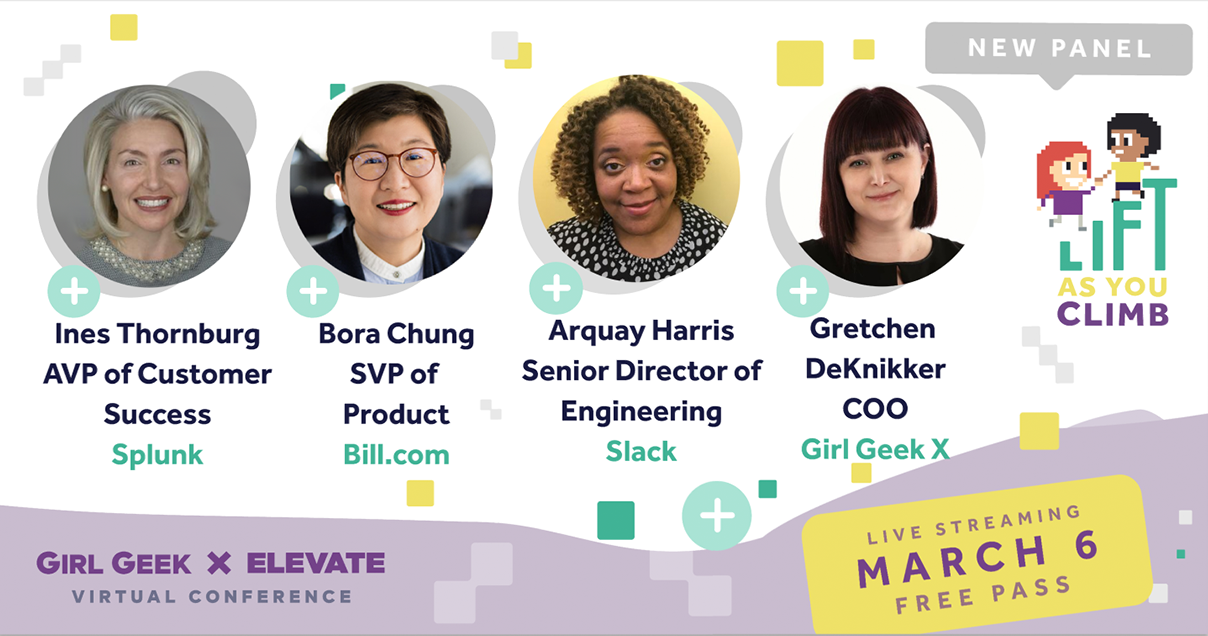
 Angie is sharing Letters for Black Lives along with a guide to talking to your Asian immigrant family about race (in Chinese, Korean, Japanese, Hindi, Indonesian, Vietnamese, Tagalog, Thai, and Arabic).
Angie is sharing Letters for Black Lives along with a guide to talking to your Asian immigrant family about race (in Chinese, Korean, Japanese, Hindi, Indonesian, Vietnamese, Tagalog, Thai, and Arabic). 

